Friday Sep 15 – Happy Birthday Scott!
sunrise over Pilot Mountain
On the 15th we visited Old Salem Living Museum & Gardens. Salem was founded in 1766 by the Moravians. They are a
Protestant religious group that first organized in what is now known as the
Czech Republic in the 15th century. The Moravians were active missionaries who established
an earlier settlement in Bethlehem, PA, before settling “Wachovia” in the North
Carolina backcountry in 1753.
Old Salem Heritage Bridge
Frank Horton Museum
ceramic stove
silk & watercolor on silk
miniature watercolor portraits
African Moravian Log Church - 1823 reconstruction
St. Philip's African Moravian Church - 1861 with 1890 addition
The gravestones were all removed to make room for the addition and since they didn't line up with the actual graves anymore, the stones were replaced to say Child or Adult. The Squire's grave was the only one left untouched. The names of the people where listed on the outside of the new church.
Lovefeast Prep kitchen
3 gravestones under the floor of the church
simple church - Moravians separated men on one side, women on the other and kids up front (no religious symbols allowed like a cross) the grave sites were set up the same way
the orchestra played in the balcony
there was a classroom upstairs where they had school once a week
archaelogical site of Reich-Hege house (Shoemaker)
cellar hole of the Reich-Hege house (Shoemaker)
Timothy Vogler Gunsmith Shop - 1831
one of the gardens had a bird feeder - Eastern Towhee
House Finch - female
We stopped at The Tavern for lunch.
The Tavern
our server
Bratwurst & Sauerkraut
Chicken Pie
upstairs dining rooms
The Tavern Woodshed
The Tavern Barn
back of the Tavern Restaurant
cellar
cellar stairs
kitchen maids preparing lunch
John Vogler House
John Vogler House & Silversmith - 1819
The Flour Box Tea Room & Café
Single Brothers' gardenSingle Brothers' House & Workshop
Single Brothers' choir
While we were there an organist visiting from another state asked if he could play it and he played it very well
Single Sisters' House
meat hanging room
Home Moravian Church
in the Salem Square park
Market & Fire Engine House
fire equipment
C. Winkler Bakery 1800 with 1818 alterations
we grabbed a snack here
Miksch Gardens & House 1771
cleaning straw for weaving
outhouse
gardens
squash blossom
single family homes
Boy's School undergoing repairs
Apothecary
God’s Acre consists of row upon row of simple, flat markers
of white marble — each one nearly square at 20 inches by 24 inches, standing
four inches high, pointing east. Each stone bears only the name of the
deceased, the dates of birth and death, and perhaps a short verse of scripture
or a heartfelt tribute to the pilgrim buried beneath it.
Moravian Cemetery
What also sets God’s Acre apart from other cemeteries is the fact that the departed here are buried chronologically — in the order in which they die — rather than in a plot with their own family members. This tradition dates back to the Moravians’ centuries-old “choir system,” in which parishioners belonged to a particular spiritual community within the church. The congregation was divided into groups according to their age, sex, and marital status — children, married men, married women, widows, and so on — to better meet their spiritual needs. When they died, they were laid to rest with other members of their group. There are gravestones of the more than 7,000 men, women, and children buried here.
inside the doctor's house
pharmacy in his house
getting a bucket of water from the back
doctor's barn
outside the museum
Pipe Organ at the Visitor's Center for preservation
It was a great day walking around this historic site and we learned a lot about the Moravian people.
Tomorrow we are visiting Mount Airy where Andy Griffith was
born and it’s said to have inspired Mayberry.





























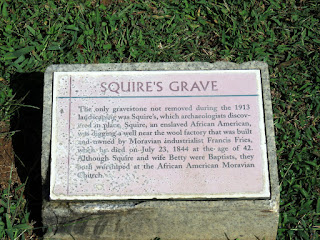





























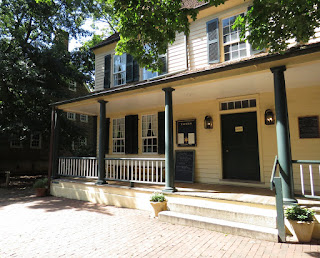



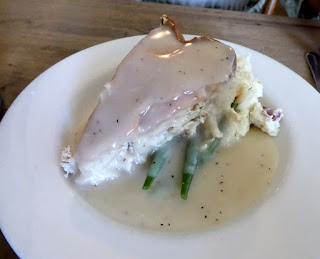
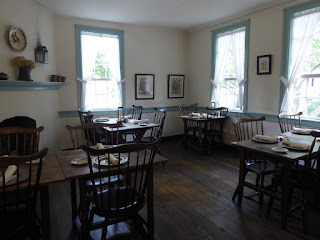































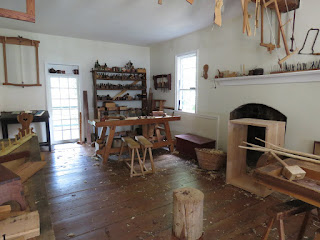










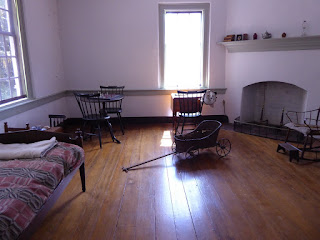



























































































No comments:
Post a Comment